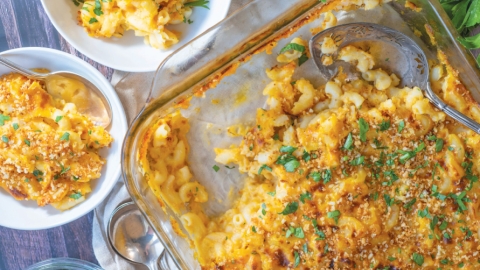Ingredients
- 1 probiotic capsule (containing 5 billion to 25 billion CFUs per capsule)
- 3 cups assorted fresh or frozen organic fruit (such as whole blueberries or blackberries, sliced strawberries, sliced or diced mangoes, sliced peaches, etc.)
- 2 tablespoons organic sugar
- ¼ teaspoon fine sea salt
Preparation
Directions
1. Place 1 to 2 tablespoons of filtered water in a small bowl or glass. Open the probiotic capsule. Add the probiotic powder to the water and stir gently to dissolve. Discard the empty probiotic capsule.
2. Toss the fruit with sugar, salt and the probiotic water.
3. Transfer the fruit to a 32-ounce (1-quart) wide-mouth glass mason jar.
4. Add just enough water to cover the fruit mixture. It’s important to keep all the fruit under the water to prevent mold from growing. You can weigh down the fruit with a glass fermentation weight, a cabbage leaf placed over your fruit with sides tucked down, a small zip-top plastic bag filled with water, glass marbles or pie weights wrapped in cheesecloth, or the perfect-size garden rock (boiled first). Just make sure whatever you use is cleaned thoroughly so that it doesn’t transfer any unwanted germs.
5. Cover the jar with a clean, breathable cloth like a bandana and secure with a rubber band. This allows bubbles to escape without causing the fruit to bubble over and create a sticky mess.
6. Leave the jar in a dark place, such as a cabinet or pantry, at room temperature for 24 to 36 hours to ferment. You will see bubbles in the liquid—that means it’s fermenting! After the first 24 hours, taste a little until the fruit reaches your desired level of tanginess while retaining its sweetness.
7. When your fruit reaches the desired fermentation level, cover the jar with a mason jar lid and refrigerate.
*Per ½ cup: 49 calories, 0 grams fat, < 1 gram protein, 12 grams carbohydrate, 2.5 grams fiber *Will vary depending what fruit you use.
From Healthy Kids, Happy Kids. Copyright © 2024 by Elisa Song, MD. Reprinted by permission of Harvest, an imprint of HarperCollins Publishers. All rights reserved.
About this recipe
Paulette Phlipot is a renowned editorial, commercial and fine-art culinary photographer known for her vibrant and narrative imagery. She encourages readers to eat fresh, local and in season. Paulette is a featured contributor and cover artist for Edible Silicon Valley. Her photography can be seen in national and regional publications, cookbooks, as well as her esteemed “Food as Art” collection and acclaimed fine art exhibitions.




